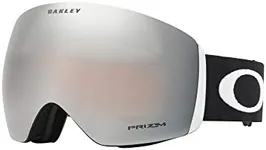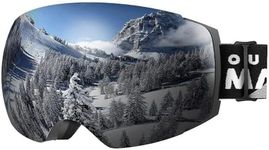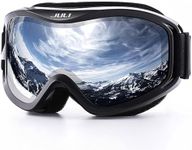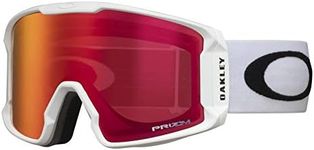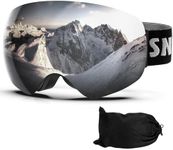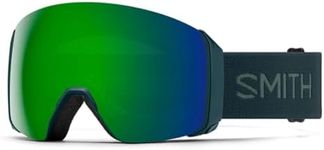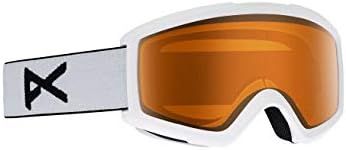Buying Guide for the Best Anti Fog Ski Goggles
When it comes to picking the right anti-fog ski goggles, it's essential to consider several key specifications to ensure you get the best fit for your needs. Ski goggles are not just about style; they play a crucial role in protecting your eyes from the elements and enhancing your visibility on the slopes. Understanding the different features and how they impact your skiing experience will help you make an informed decision.Lens TypeThe lens type is crucial because it affects your visibility and eye protection. There are cylindrical, spherical, and toric lenses. Cylindrical lenses are flat and curve around your face, offering basic protection and affordability. Spherical lenses curve both horizontally and vertically, providing better peripheral vision and less distortion. Toric lenses combine the benefits of both, offering excellent clarity and a wide field of view. Choose spherical or toric lenses if you prioritize clarity and peripheral vision, especially in challenging conditions.
Anti-Fog CoatingAnti-fog coating is a treatment applied to the inside of the lens to prevent fogging, which is essential for maintaining clear vision. This feature is particularly important in varying weather conditions where temperature changes can cause fogging. Look for goggles with a high-quality anti-fog coating to ensure long-lasting performance. If you often ski in humid or rapidly changing conditions, prioritize goggles with advanced anti-fog technology.
VentilationVentilation refers to the airflow system in the goggles that helps reduce fogging by allowing air to circulate. Good ventilation is crucial for keeping your lenses clear and your face comfortable. Goggles with more vents or adjustable ventilation systems offer better airflow and are ideal for intense skiing or warmer conditions. If you tend to overheat or ski in warmer climates, opt for goggles with superior ventilation.
Lens Tint and UV ProtectionLens tint and UV protection are important for eye safety and visibility. Different tints are suitable for various light conditions: darker tints for bright, sunny days, and lighter tints for overcast or low-light conditions. UV protection is essential to shield your eyes from harmful ultraviolet rays. Choose goggles with interchangeable lenses or a versatile tint if you ski in varying light conditions, and always ensure they offer 100% UV protection.
Fit and ComfortFit and comfort are critical for ensuring that your goggles stay in place and feel good during long skiing sessions. Goggles come in different sizes and shapes to fit various face shapes and helmet compatibility. Look for adjustable straps, foam padding, and flexible frames to achieve a snug and comfortable fit. If you wear a helmet, make sure the goggles are compatible with it to avoid gaps and discomfort.
DurabilityDurability refers to the goggles' ability to withstand impacts and harsh conditions. High-quality materials and construction ensure that your goggles last longer and provide reliable protection. Look for features like scratch-resistant lenses and robust frames. If you ski frequently or in challenging environments, prioritize durability to ensure your goggles can handle the wear and tear.


